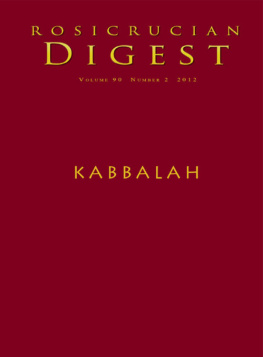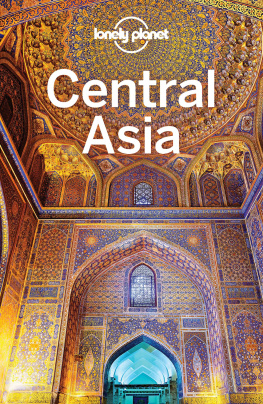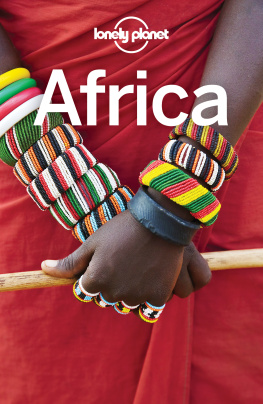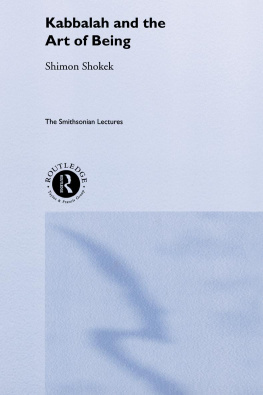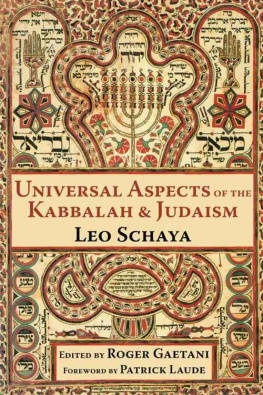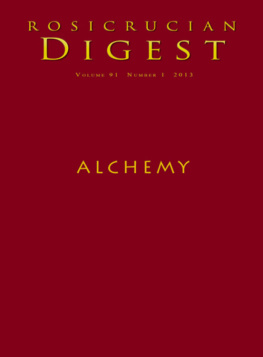coll. - Kabbalah: Rosicrucian Digest
Here you can read online coll. - Kabbalah: Rosicrucian Digest full text of the book (entire story) in english for free. Download pdf and epub, get meaning, cover and reviews about this ebook. year: 2015, publisher: Rosicrucian Order, AMORC, genre: Religion. Description of the work, (preface) as well as reviews are available. Best literature library LitArk.com created for fans of good reading and offers a wide selection of genres:
Romance novel
Science fiction
Adventure
Detective
Science
History
Home and family
Prose
Art
Politics
Computer
Non-fiction
Religion
Business
Children
Humor
Choose a favorite category and find really read worthwhile books. Enjoy immersion in the world of imagination, feel the emotions of the characters or learn something new for yourself, make an fascinating discovery.
Kabbalah: Rosicrucian Digest: summary, description and annotation
We offer to read an annotation, description, summary or preface (depends on what the author of the book "Kabbalah: Rosicrucian Digest" wrote himself). If you haven't found the necessary information about the book — write in the comments, we will try to find it.
Kabbalah: Rosicrucian Digest — read online for free the complete book (whole text) full work
Below is the text of the book, divided by pages. System saving the place of the last page read, allows you to conveniently read the book "Kabbalah: Rosicrucian Digest" online for free, without having to search again every time where you left off. Put a bookmark, and you can go to the page where you finished reading at any time.
Font size:
Interval:
Bookmark:

Each issue of the Rosicrucian Digest provides members and all interested readers with a compendium of materials regarding the ongoing flow of the Rosicrucian Timeline. The articles, historical excerpts, art, and literature included in this Digest span the ages, and are not only interesting in themselves, but also seek to provide a lasting reference shelf to stimulate continuing study of all of those factors which make up Rosicrucian history and thought. Therefore, we present classical background, historical development, and modern reflections on each of our subjects, using the many forms of primary sources, reflective commentaries, the arts, creative fiction, and poetry.
This magazine is dedicated to all the women and men throughout the ages who have contributed to and perpetuated the wisdom of the Rosicrucian, Western esoteric, Tradition.
May we ever be worthy of the light with which we have been entrusted.
In this issue, we explore the tradition received from Kabbalah, from its ancient beginnings to its practical application in the present day.
ROSICRUCIAN DIGEST
No. 2-2012
Vol. 90-No. 2
Official Magazine of the Worldwide Rosicrucian Order
Established in 1915 by the Supreme Grand Lodge of the English Language Jurisdiction, AMORC, Rosicrucian Park, San Jose, CA 95191.
Copyright 2012 by the Supreme Grand Lodge of AMORC, Inc. All rights reserved. Republication of any portion of Rosicrucian Digest is prohibited without prior written permission of the publisher.
ROSICRUCIAN DIGEST (ISSN #00358339) is published bi-annually for $12.00 per year, single copies $6.00, by the Grand Lodge of the English Language Jurisdiction, AMORC, Inc., at 1342 Naglee Ave., San Jose, CA 95191. POSTMASTER: Send address changes to ROSICRUCIAN DIGEST at 1342 Naglee Ave., San Jose, CA 951910001.
Developed by Metrodigi www.metrodigi.com


Kabbalah:
A Brief Overview
Joshua Maggid, Ph.D., FRC

T here are strong connections with Kabbalah in Rosicrucianism and Martinism, and Kabbalah remains an important aspect of the teachings of the Rosicrucian Order, AMORC and the Traditional Martinist Order. In this article, Joshua Maggid, a longtime Rosicrucian and Martinist who has studied Kabbalah for many years, presents a brief overview of Kabbalah, including Jewish, Christian, and Hermetic Kabbalah.
For those beginning to learn about it, Kabbalah can be difficult and confusing. Different books say different things. Any two books on Kabbalah may address completely different topics, or they may provide conflicting definitions and interpretations of the same material. In addition, authors use different English spellings for the same Hebrew terms.
One reason for this is that there are several different systems or traditions that all refer to themselves as Kabbalah. There is Jewish Kabbalah, Christian Kabbalah, and Hermetic Kabbalah. In recent years, there has also appeared a kind of New Age Kabbalah, which takes elements of traditional Jewish Kabbalah out of their religious context and presents them as a collection of practical techniques for finding happiness, fulfillment, prosperity, relationships, etc.
Another common way of classifying different types of Kabbalah is according to the kinds of activities involved.
Theoretical Kabbalah or Theosophical Kabbalah includes a system of metaphysics, a description of the inner workings of Divinity and how it interacts with the material world, and methods of deriving esoteric interpretations of the Holy Scriptures.
Meditative Kabbalah consists of a wide variety of practices aimed at attaining higher states of consciousness, exploring the spiritual realm, encountering the Divine, and receiving new spiritual insights. This is also referred to as Mystical Kabbalah and Prophetic Kabbalah.
Practical Kabbalah refers to theurgy and magic, attempting to influence the Divine Realm and produce practical effects in the material world. To some extent, however, these distinctions can be somewhat arbitrary. Some modern authors in the Hermetic or Magical tradition see magic more as a system of spiritual development rather than an exercise of personal power.
Jewish Kabbalah
Some authors apply the word Kabbalah to all of Jewish mysticism, going back thousands of years, including the Merkavah tradition and even the Biblical prophets. Others reserve the term Kabbalah for the specific form of Jewish mysticism that began around the twelfth and thirteenth centuries CE in southern France and in Spain. That was when the word Kabbalah was first used to refer to these writings and activities.
Merkavah Mysticism (The Work of the Chariot) is sometimes classified as pre-Kabbalistic or as Early Kabbalah. Its dates are usually given as starting around the second century BCE and continuing for about a thousand years. These mystics would meditate and send their souls upward, proceeding through a series of seven holy palaces or chambers. Each chamber provides a different spiritual experience. They hoped to eventually reach the seventh and highest chamber and receive a divine vision like the one described by the prophet Ezekiel [1:1-28].
The Sefer YetzirahIt describes in detail how God used the letters of the Hebrew Alphabet to create everything in the universe. When properly interpreted, it can also be read as a meditation manual that describes a number of meditation techniques using the Hebrew letters. Traditionally attributed to the Biblical patriarch Abraham, the origin of the Sefer Yetzirah is unknown, but some date it to around the second or third century CE.
The Sefer ha Zohar (The Book of Splendor) is generally acknowledged to be the most important Kabbalistic writing. Not a single book, but a collection of books, the Zohar contains esoteric interpretations of the Holy Scriptures and descriptions of the inner workings of the Divine Realm. Much of it is in the form of stories about Rabbi Shimon bar Yochai and his companions, traveling around the Holy Land and discussing the hidden meanings of the scriptures. Manuscripts of portions of the Zohar were first circulated in Spain by Rabbi Moshe de Leon in the 1290s. He claimed that he found them, and that they were written by Rabbi Shimon bar Yochai in the second century CE. Academic scholars generally believe that the Zohar was actually written by de Leon himself, or possibly by a group with which he was associated. It may have incorporated or expanded upon earlier oral traditions. Mostly written in a form of Aramaic, much of the Zohar is extremely arcane and notoriously difficult to understand.

Font size:
Interval:
Bookmark:
Similar books «Kabbalah: Rosicrucian Digest»
Look at similar books to Kabbalah: Rosicrucian Digest. We have selected literature similar in name and meaning in the hope of providing readers with more options to find new, interesting, not yet read works.
Discussion, reviews of the book Kabbalah: Rosicrucian Digest and just readers' own opinions. Leave your comments, write what you think about the work, its meaning or the main characters. Specify what exactly you liked and what you didn't like, and why you think so.

